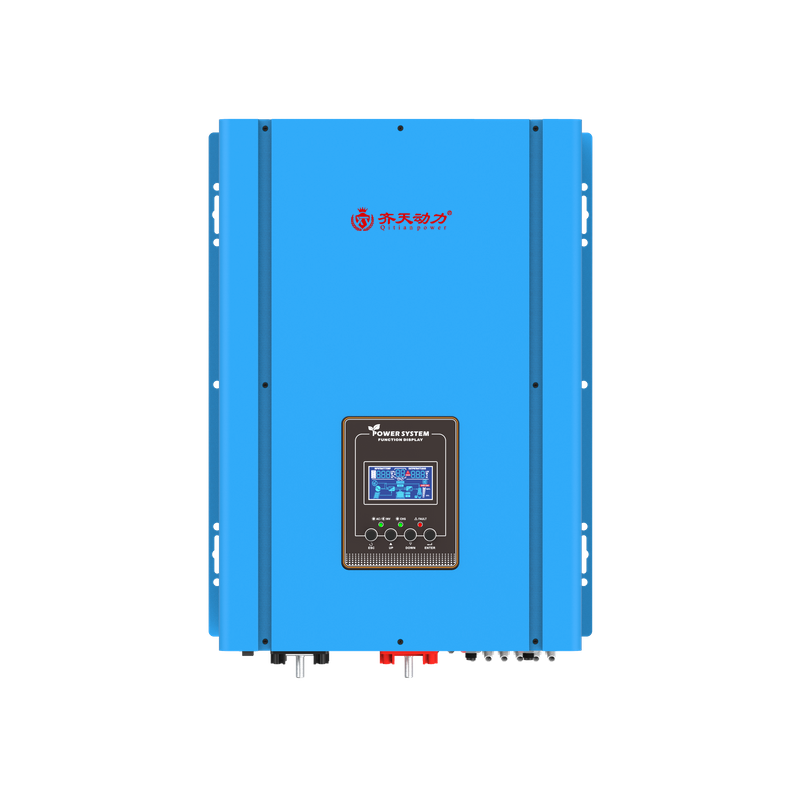
AEG在线式UPS当市电停电时UPS是蓄电池供电还是静态旁路供电?
在线式的肯定由蓄电池供电,当主回路有故障时(逆变器或电池),才通过静态开关转旁路,由电源绕过UPS主回路直接给负荷供电。
地铁列车的英语文章
关于上海轨道交通建设的英语文章
SHANGHAI METRO LIGHT RAIL SYSTEM, CHINA
The economic boom in Shanghai, which has a population of 15 million, had unleashed such a surge in traffic by the end of the 1980s that the transportation system was facing meltdown.
The city's authorities, who were increasing happy to seek advice from Western Europe and North America, decided in favour of a 40-year phased programme that would include 11 metro lines covering over 325km.
Although still in its relatively early stages with only three routes clearly mapped out, Metro has cut cross-city travel times in some cases from over an hour to a few minutes. A million journeys a day are expected by 2005.
THE PROJECT
After six years of construction and preparation work, Line 1 opened to considerable fanfares in April 1995, connecting the northern and southern districts of the city, and a 5.25km extension was added in 1996.
The early projects were delivered under a comprehensive contract between the corporation and its chosen consortium, comprising Adtranz (now Bombardier) and Siemens.
The contract with the two manufacturers covered the design, production, delivery and introduction into service of the rolling stock, traction power supply, overhead line system, station and telecommunications equipment, and signalling control and data analysis equipment. Finance was provided by a soft loan of DM 460 million from the Federal Republic of Germany.
The first phase of Line 2 was inaugurated on 13 June 2000, and when the whole section is finally completed it will link Hong Qiao International Airport and the new Pudong International Airport. The 25km Line 3, known as the Pearl Line, opened for revenue service in 2001.
INFRASTRUCTURE
Line 1, which has 16 stations, starts in the southern district at Xin Zhuang, and travels underneath the city centre to the central railway station.
The first 16.4km-long underground section of Line 2 runs from Zhongshan Park to Longdong Road Station in Pudong, and opened in September 1999, in time for the 50th anniversary of the People's Republic of China. When finally complete, Line 2 will be 55km long and stretch from Hong Qiao Airport, passing under a number of residential areas, public parks and the Huangpu River, to Pudong International Airport.
Line 3, the 19-station Pearl Line also has the main station as its focal point, but loops northwards on elevation from Shanghai South station to Zhongshan Park and terminates at Jiangwan Zhen. Starting with 25km and 19 stations, it will eventually be 62km in length.
The interiors of stations aim to make it easy for passengers to distinguish between lines. Hanging lamps and lattice flooring are constant themes but different styles of beams and columns, and individual styles of decoration have been adopted.
Power for the system is fed from the city's 110kV main supply, via two infeed stations, which feed seven sub-stations along the route.
ROLLING STOCK
The trains for Line 1 were supplied by another consortium, the German Shanghai Metro Group, which, along with Adtranz and Siemens, also includes brake equipment manufacturer AEG Westinghouse, and coach body builder Duewag.
The vehicles were designed especially to meet specifications laid down by Shanghai Metro Corporation covering the anticipated passenger numbers per hour and direction.
The trains usually operate in formations of six cars with capacity for 1,860 passengers, but these can be increased to eight cars, with the addition of two extra motor cars to cope with extra loadings at peak times. Each car also has five pairs of pneumatically operated pocket sliding doors on each side.
New trains introduced for Line 2 services incorporated technological improvements over their predecessors, and were based closely on vehicles for Guangzhou, which closely followed Shanghai in building a new light rail system. Enhancements incorporated in the new trains include more efficient air conditioning and larger doors.
When Line 3 first opened, the fleet of 28 Alstom Megapolis six-car trains had not arrived, so stock was borrowed from the other lines to offer a limited service.
In May 2002, Siemens won an order for 28 trains for the Pearl Line, with an option for another ten, while Bombarder is bulding ten new six-car train sets in Cuina for Line 1, with bogies from the UK and propulsion equipment from Sweden.
SIGNALLING/COMMUNICATIONS
Signalling installations are being provided by Alstom under the terms of the comprehensive contract it has been awarded for the development and construction of Line 3.
The motor car of each train has equipment which can detect and monitor faults, and pass on such information to the driver. The diagnostic signals are also stored so that these faults can be easily pinpointed when a train returns to the maintenance depot.
The original ticketing system has not proved successful and, from 2003, a new plastic single-journey ticket has replaced the old magnetic and paper cards. Small chips are embedded in the new tokens so passengers only need to hold them near the check-in machines while entering a subway station and throw them into the check-out machines while departing.
THE FUTURE
An ambitious plan adopted by the Shanghai Metro Corporation for 2025 envisages a comprehensive network of 11 lines over 325km, supported by seven light rail routes (136km).
Line 1 is being further extended from the current terminal at Shanghai railway station to Baoshan district in the northern part of the city. The Pearl Line will link Minghang District in the southwest and Baoshan District in the north.
Metro Lines 4 and 5 are expected to link southwest and northeast parts of the city, Pudong New Area and downtown. Line 6 will be a comparatively short line linking the downtown area and Pudong New Area, and planners are still considering whether to extend the line further westward to Pudong International Airport. Lines 10 and 11 will encircle the city.
光伏逆变器牌子好多,有没有一个前十排名?
光伏逆变器前十排名:阳光、华为、奥太、固得威、特变、上能、追日、锦浪、谷瑞瓦特
逆变器的工作原理及2个主要作用是什么?
工作原理
逆变器是一种DC to AC的变压器,它其实与转化器是一种电压逆变的过程。转换器是将电网的交流电压转变为稳定的12V直流输出,而逆变器是将Adapter输出的12V直流电压转变为高频的高压交流电;两个部分同样都采用了用得比较多的脉宽调制(PWM)技术。其核心部分都是一个PWM集成控制器,Adapter用的是UC3842,逆变器则采用TL5001芯片。TL5001的工作电压范围3.6~40V,其内部设有一个误差放大器,一个调节器、振荡器、有死区控制的PWM发生器、低压保护回路及短路保护回路等。
输入接口部分:输入部分有3个信号,12V直流输入VIN、工作使能电压ENB及Panel电流控制信号DIM。VIN由Adapter提供,ENB电压由主板上的MCU提供,其值为0或3V,当ENB=0时,逆变器不工作,而ENB=3V时,逆变器处于正常工作状态;而DIM电压由主板提供,其变化范围在0~5V之间,将不同的DIM值反馈给PWM控制器反馈端,逆变器向负载提供的电流也将不同,DIM值越小,逆变器输出的电流就越大。
电压启动回路:ENB为高电平时,输出高压去点亮Panel的背光灯灯管。
PWM控制器:有以下几个功能组成:内部参考电压、误差放大器、振荡器和PWM、过压保护、欠压保护、短路保护、输出晶体管。
直流变换:由MOS开关管和储能电感组成电压变换电路,输入的脉冲经过推挽放大器放大后驱动MOS管做开关动作,使得直流电压对电感进行充放电,这样电感的另一端就能得到交流电压。
LC振荡及输出回路:保证灯管启动需要的1600V电压,并在灯管启动以后将电压降至800V。
输出电压反馈:当负载工作时,反馈采样电压,起到稳定I逆变器电压输出的作用。
作用
逆变器是把直流电能(电池、蓄电瓶)转变成交流电(一般为220v50HZ正弦或方波)。通俗的讲,逆变器是一种将直流电(DC)转化为交流电(AC)的装置。它由逆变桥、控制逻辑和滤波电路组成。
高压逆变器
特斯拉线圈?????
逆变器
有纯正弦波三相逆变器,三相逆变器是将直流电转换成三相交流电的设备比单相逆变器复杂。而三相电是由三个空间正弦波形互为120度的单正弦波组成的供电系统是工农企业生产的必须重要电能源。
湖北仙童科技有限公司 高端电力电源全面方案供应商 江生 13997866467
